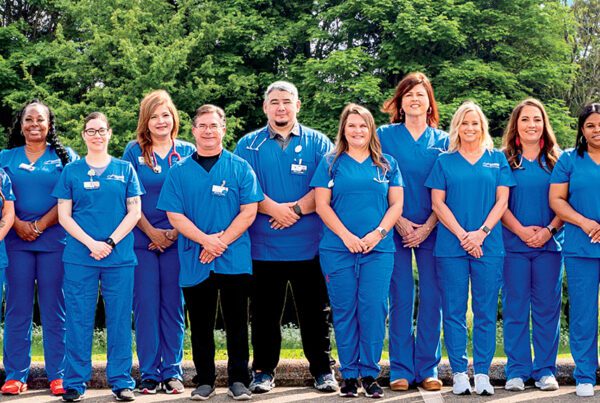MD Monthly: I’m spending more time outside, and I’m concerned about possibly getting skin cancer. How do I know if a spot I have is cancerous?
Dr. Susan Pike: For more than one million Americans this year, that sun exposure could mean skin cancer. The incidence and mortality rates of basal cell carcinoma and squamous cell carcinoma – the two most common forms of skin cancer – have increased exponentially over the last several years, and every year cases continues to increase. Prevention is best, but for those who are already at risk, early identification and treatment could save your life, notes Susan Pike, M.D., plastic and reconstructive surgeon with Baylor Scott & White Medical Center in Round Rock.
“Sunscreen is critical in helping prevent sun damage and skin cancers,” Dr. Pike said, “while generally an SPF of 50 or higher and using a physical blocker sunscreen is best. If you’re out in the sun for more than two hours, reapply that SPF at least every two hours.”
Skin cancers can consist of several different types of cancer. Some warning signs to be on the lookout for include:
- An open sore that bleeds, oozes, or crusts and remains open for three or more week
- A reddish patch or irritated area, frequently occurring on the chest, shoulders, arms or legs
- A shiny bump or nodule, that is pearly or translucent and is often pink, red, or white. The bump can also be tan, black, or brown, especially in dark-haired people, and can be confused with a mole
- A pink growth with a slightly elevated rolled border and a crusted indentation in the center
- A scar-like area which is white, yellow or waxy, and often has poorly defined borders
- A wart-like growth that crusts and occasionally bleeds
- A persistent, scaly red patch with irregular borders that sometimes crusts or bleeds
- An elevated growth with a central depression that occasionally bleeds. A growth of this type may rapidly increase in size
Any irregularity in your skin should be checked out by your physician immediately. Additionally, physicians recommend an annual skin check for all adults to ensure that treatment can be started as soon as possible.
“Once a patient has been diagnosed with skin cancer, he/she should be well informed about the treatment options as there are a variety of both non-surgical and surgical treatments. It is important to discuss all options with a physician as treatments will vary from case to case.”
Dr. Susan Pike is a plastic and reconstructive surgeon on the medical staff of Baylor Scott & White Medical Center in Round Rock. For more information call 512.509.0200 or visit Baylor Scott & White.







Recent Comments